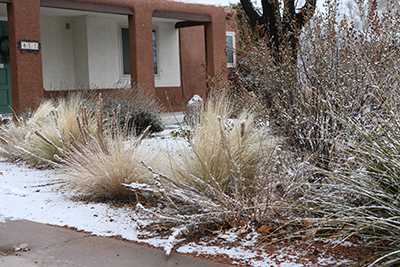November is the time to prepare your landscape for winter. By following the simple recommendations outlined below, you can get your yard ready to endure the coming winter months so it can flourish next spring.
How do I prepare my plants for the winter season?
Turf grass:
How do I know how deeply I’m watering my plants?
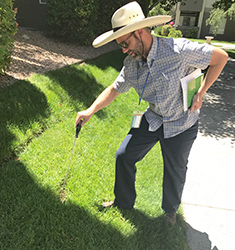 Use a soil probe or a long screwdriver to test soil moisture. Push the screwdriver into the soil about an hour after you’ve watered your plants. It will go easily into moist soil. Mark and measure how far it went into the ground. That will tell you how deep you have watered that plant. Every yard is different, but once you figure out how long it takes your watering system to water to certain depths, you’ll be set.
Winterize your irrigation system
In a climate where winter temperatures can get below freezing, it may be advisable to “winterize” your irrigation system in order to avoid damage. If water is left in pipes, valves and sprinkler heads during freezing temperatures, that water may expand. You can imagine the results.
The steps you should take to prepare your irrigation system for winter depend on a lot of factors, but the overall goals for winterizing are the same for most systems:
Use a soil probe or a long screwdriver to test soil moisture. Push the screwdriver into the soil about an hour after you’ve watered your plants. It will go easily into moist soil. Mark and measure how far it went into the ground. That will tell you how deep you have watered that plant. Every yard is different, but once you figure out how long it takes your watering system to water to certain depths, you’ll be set.
Winterize your irrigation system
In a climate where winter temperatures can get below freezing, it may be advisable to “winterize” your irrigation system in order to avoid damage. If water is left in pipes, valves and sprinkler heads during freezing temperatures, that water may expand. You can imagine the results.
The steps you should take to prepare your irrigation system for winter depend on a lot of factors, but the overall goals for winterizing are the same for most systems:
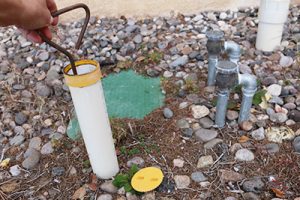
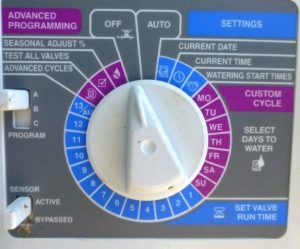 2. Turn off the irrigation system controller (if you have one)
2. Turn off the irrigation system controller (if you have one)
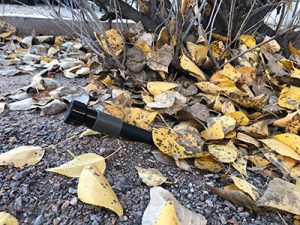 3. Drain the water from all pipes, valves, and sprinkler heads
3. Drain the water from all pipes, valves, and sprinkler heads
- Mow your lawn to a height of 1-2 inches. Grass left too long over the winter can develop brown patches.
- Aerate the ground before it freezes. Aerating involves penetrating the lawn with small holes to allow air, water and nutrients to reach the roots over winter. Power aerators are available to rent at your local home and garden center, or you can try a strap-on shoe aerator.
- Remove fallen leaves from the lawn. These may cause damage to the grass if left over the winter.
- Add mulch to existing plants. Mulch helps retain moisture and keeps the soil a more consistent temperature in the winter. When mulching trees, be sure to leave space around the trunk.
| Plant Type | How often? | How deep? |
| Trees | 1 time a month | 24 inches |
| Shrubs | 1 time a month | 18 inches |
| Flowering plants | 1 time a month | 12 inches |
| Desert accents | none | none |
| Groundcover | 1 time a month | 12 inches |
| Grass: turf | 2 times a month | 6 inches |
| Grass: ornamental | 1 time a month | 12 inches |
| Vines | 1 time a month | 18 inches |

Testing soil moisture with a long screwdriver.

Shut-off valve with sprinkler valve key.
- Shut off the water supply to your irrigation system
- Locate your shut-off valve (often hidden in a 3” PVC pipe; sometimes this pipe has a white or yellow cap on it as shown in the photo) and turn it to the right to shut it off

Controller set to the “off”position.
- Leave your controller plugged in to save programming information for next year
- Turn the controller dial to OFF.

Flush Cap at the end of a drip system.
- There are several ways to drain your system. Manual drain valves, automatic drain valves, are blown out with compressed air. This should be left to trained professionals.
- Local irrigation specialists can be hired to help.
- If you have an irrigation system with drip hoses, we recommend you locate the end cap (flush cap) of the drip hose and drain out the water.


